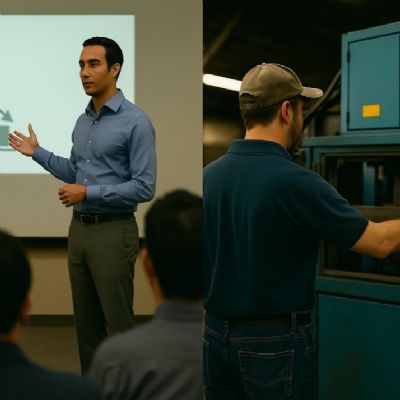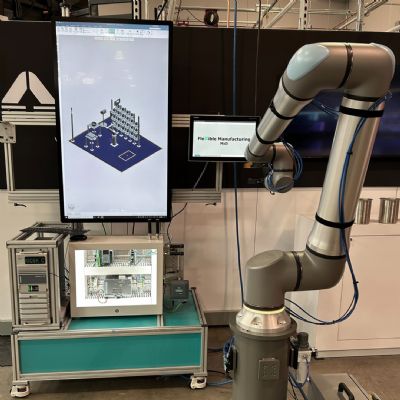Sensor Types, and Their Roles in the Pressroom
July 28, 2020Comments
1. What has made metal-sensing inductive products such workhorse tools in pressrooms?
Inductive sensors address key pressroom-sensing requirements better than any other technology. They’re extremely accurate, offering repeatability of a few thousandths of an inch. Their mechanical design, with electronics fully encapsulated, meets the durability demands of the pressroom. Their immunity to lubricant degradation and ingress, as well as shock and vibration, is outstanding. The technology is flexible, with off-the-shelf models available in hundreds of different form factors, and with analog, digital and IoT-friendly outputs. Compared to the cost of a die crash, they’re also extremely cost-effective, with most models available for less than $100. What’s not to like about them?
2. Where do photoelectric or laser sensors fit into the picture?
When sensing-distance requirements, or perhaps wiring considerations, prevent a stamper from embedding an inductive sensor in the die, photoelectric sensors (photoeyes) offer a great alternative. They can be mounted outside of the die yet still monitor workpieces and tooling with pinpoint precision. Visible red or laser light spots make for easy setup, and background-suppression technologies ensure that they only detect the workpiece and not the surroundings. They also cover a much wider scan area than their inductive counterparts. While inductive technology has remained relatively unchanged over the past 25 years, the application-solving capabilities of photoeyes have exploded. Anyone who may have given up on them 10 or 15 years ago should give them another look.
3. Since oil mist or other contaminants can impact the performance of photoelectric sensors, what types of sensors work best in these types of environments?
An underutilized option is the ultrasonic sensor. Ultrasonics use acoustic time of flight to provide presence/ absence, or analog feedback. They monitor process parameters such as lube-tank level, coil-feed loop tension and coil diameter. Unlike optics-based products, their accuracy is completely unaffected by glare, color variances and oil misting. Be aware, however: Compared to other sensing technologies, an ultrasonic beam is somewhat wide. So, it performs best in open areas.
4. As stampers look to automate quality and inspection functions, using data captured from linear camera systems, what are some of the most popular applications for these systems?
Linear camera systems take optical “slices” of a target object and piece them together via software to provide high-accuracy part profiling. They’re best suited for larger operations, such as stamping a car door, and are useful at every process stage. At the front end they profile the blank, while also monitoring the feed-stack height. Inside of a press, they ensure that no trimmed scrap remains in the die after the workpiece is transferred. And, after the stamping operation, the same camera system scans the rack to ensure that the rack itself, and its retaining bars, are in place for loading.









